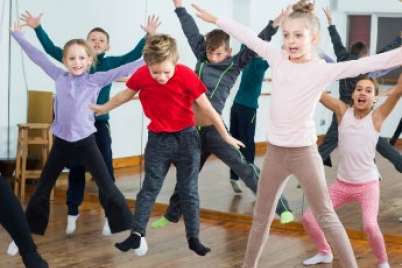
How fencing is like hockey, and why kids love it so much
Denis Fournier likes to compare fencing skills to hockey.
“You need skating skills first, to play hockey, and in fencing, you need good footwork,” says Fournier, owner and coach at Priori Epée Fencing Club in Calgary.
“And in hockey, if you’re a good skater, you’ll probably be able to handle a stick. In fencing, your ‘stick’ is your epée.”
Then there’s the goal: hockey players aim to get the puck in the net. In fencing, you “need to hit the buzzer on the end of your epée,” he says.
“An epée is a thrusting weapon. There’s a little button the end and when it makes contact with something, it clicks and there’s buzzing and a light.”
Fournier knows what he’s talking about. For more than 30 years, he’s been fencing and, for much of that time, coaching fencing to children and adults.
He grew up in the Eastern Townships, near Sherbrooke, Quebec, but moved to Calgary 34 years ago.
“The Calgary Fencing Club was looking for a coach and I was pretty much the only person that applied,” he says with a chuckle.
But he had serious credentials, too. He had been fencing competitively for years, and he had studied to become a fencing coach in both Quebec and France. He also holds a physical education degree.
He never looked back. A year after moving to Calgary, he founded the Epic Fencing Club, which is still in operation, and he coached both it and the Calgary Fencing Club until the early 1990s.
Then, after seeing many of his students compete nationally and internationally — including the Olympics — he took a break from fencing for a few years.
But he returned to the sport in Spring 2008, with the formation of the Priori Epée Fencing Club, for ages eight and above.
It can be difficult to start kids younger than age eight fencing, because the protective equipment isn’t made small enough for younger kids, Fournier says.
Plus, a slightly older child understands that there’s more to fencing “than just slashing two sticks against each other,” he says with a laugh. “They can sort of understand that there’s a difference between fencing and what they’ve seen on TV.”
Fencing, however, teaches kids skills that they can use for life, Fournier says, whether they advance in the sport or move on to other activities.
“They learn hand-eye coordination, and hand-leg coordination,” he explains.
“Fencing is not a symmetrical activity. Sometimes you move forward; you lunge. Sometimes you move sideways.”
But there are rules to follow. Not every movement is the same, Fournier says.
“The upper body does something very different from the lower body, but the torso must remain quite neutral when most of this is happening,” he says.
In addition to physical literacy skills, kids also learn the importance of mental training and focus. “If you aren’t completely involved in what is happening, you’re going to get hit,” Fournier says.
And whether they find that focus or not, they’re still going to get a great workout, he adds with a laugh.
“Kids are tired at the end of a class. They’ve sweated and they’re ready for dinner,” he says.
“But 90 percent of the kids who try it love it. They can’t wait to come back.”





